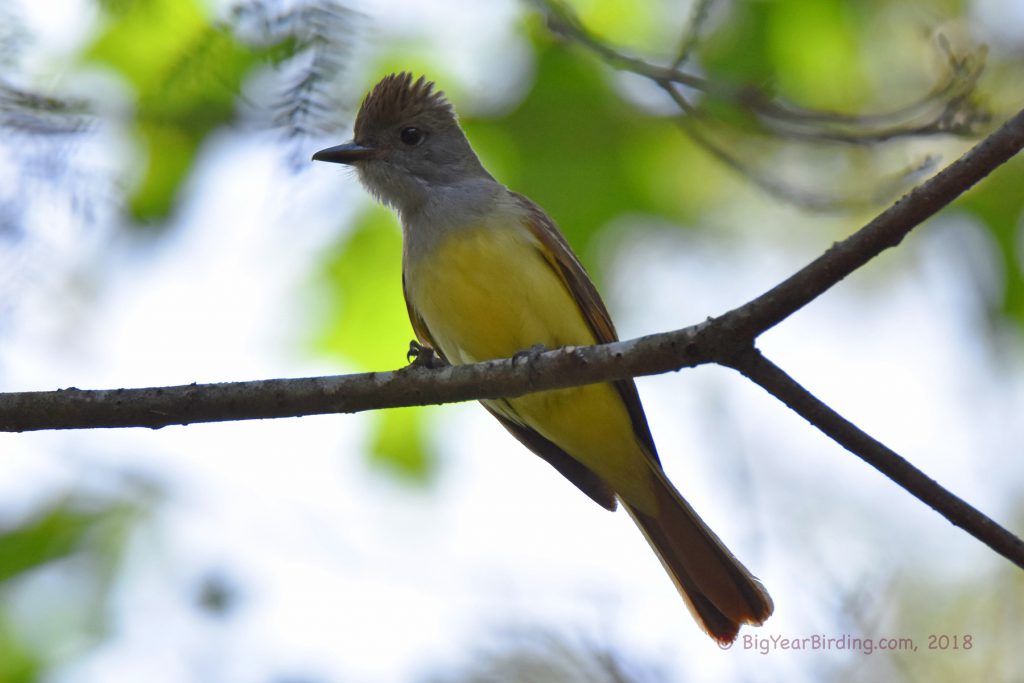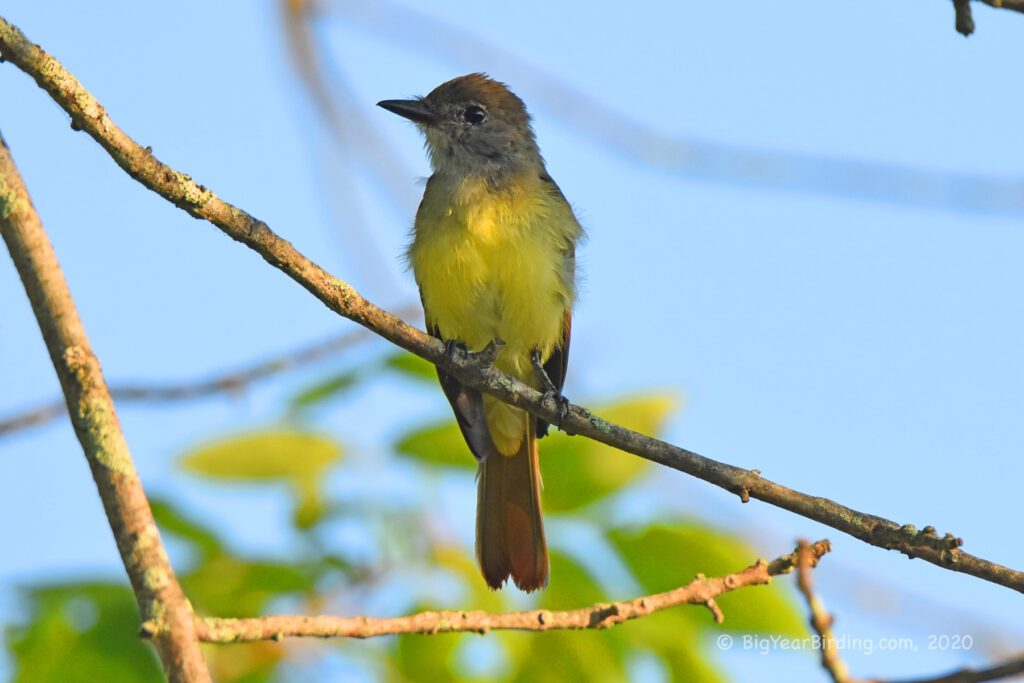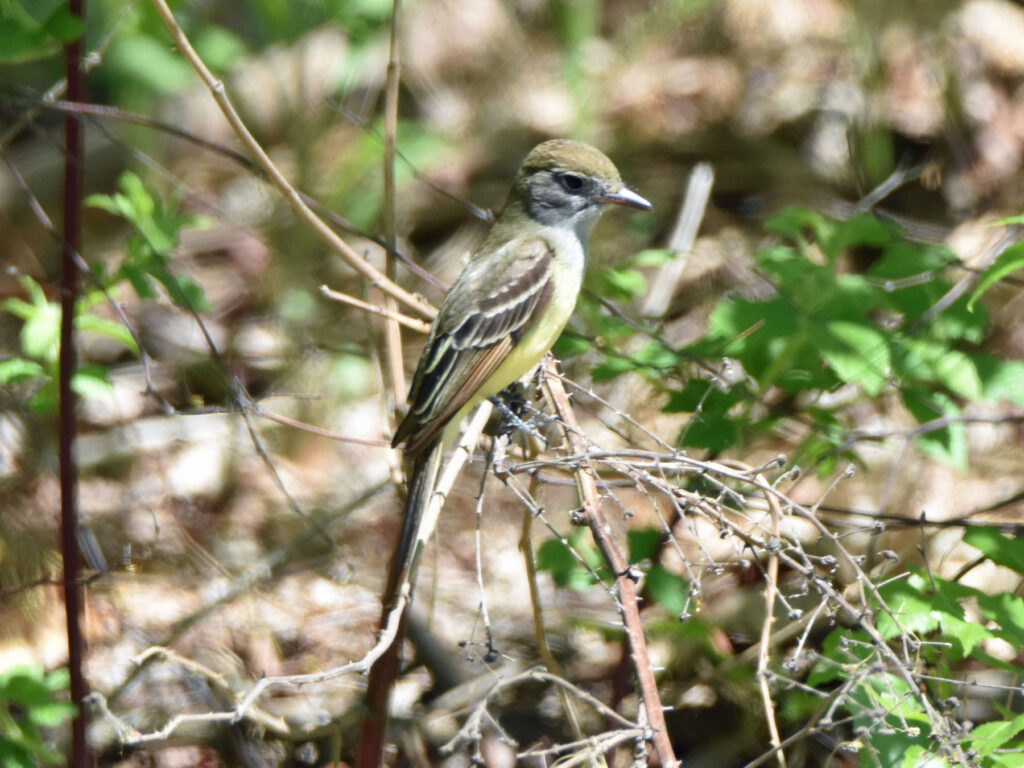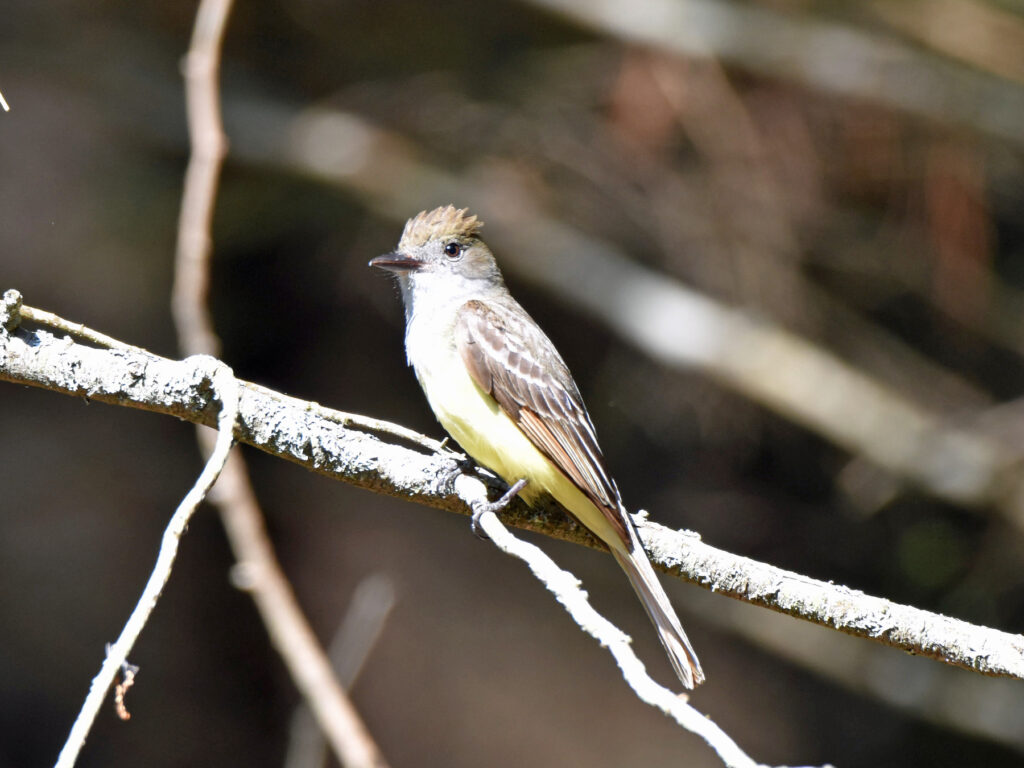
The Great Crested Flycatcher is a medium-sized songbird found throughout the eastern half of the United States, Mexico, and parts of Central America. Adults typically measure between 7.5-9 inches in length and weigh between 0.8-1.2 ounces. They have a wingspan of about 13 inches.

One of the most distinguishing field marks of the Great Crested Flycatcher is its large, crested head. The crest is typically raised and orange-yellow in color, which contrasts with the bird’s gray-brown upperparts and bright yellow belly. Their wings and tail are brown with subtle white wing bars and a rust-colored tail tip. Additionally, they have a thick, black bill that is curved at the tip.
Great Crested Flycatchers are migratory, spending the winter in southern Mexico, Central America, and South America, and breeding in the eastern United States. They arrive in their breeding territories in mid-April and depart in late September or early October. During migration, they can be found in a wide range of habitats, including forests, woodlands, and suburban areas.
During breeding season, Great Crested Flycatchers are territorial and will defend their nest site vigorously. They build their nests in tree cavities, using materials such as grass, leaves, and hair. They lay 4-8 eggs, which hatch after about two weeks. Both parents help to feed the chicks, which fledge after about three weeks.

In terms of diet, Great Crested Flycatchers are primarily insectivorous, feeding on a variety of insects such as beetles, moths, and butterflies. They are known to catch insects in mid-air and to occasionally eat fruit. Overall, the Great Crested Flycatcher is a striking bird with a distinctive appearance and behavior, making it a popular target for birdwatchers and nature enthusiasts.

